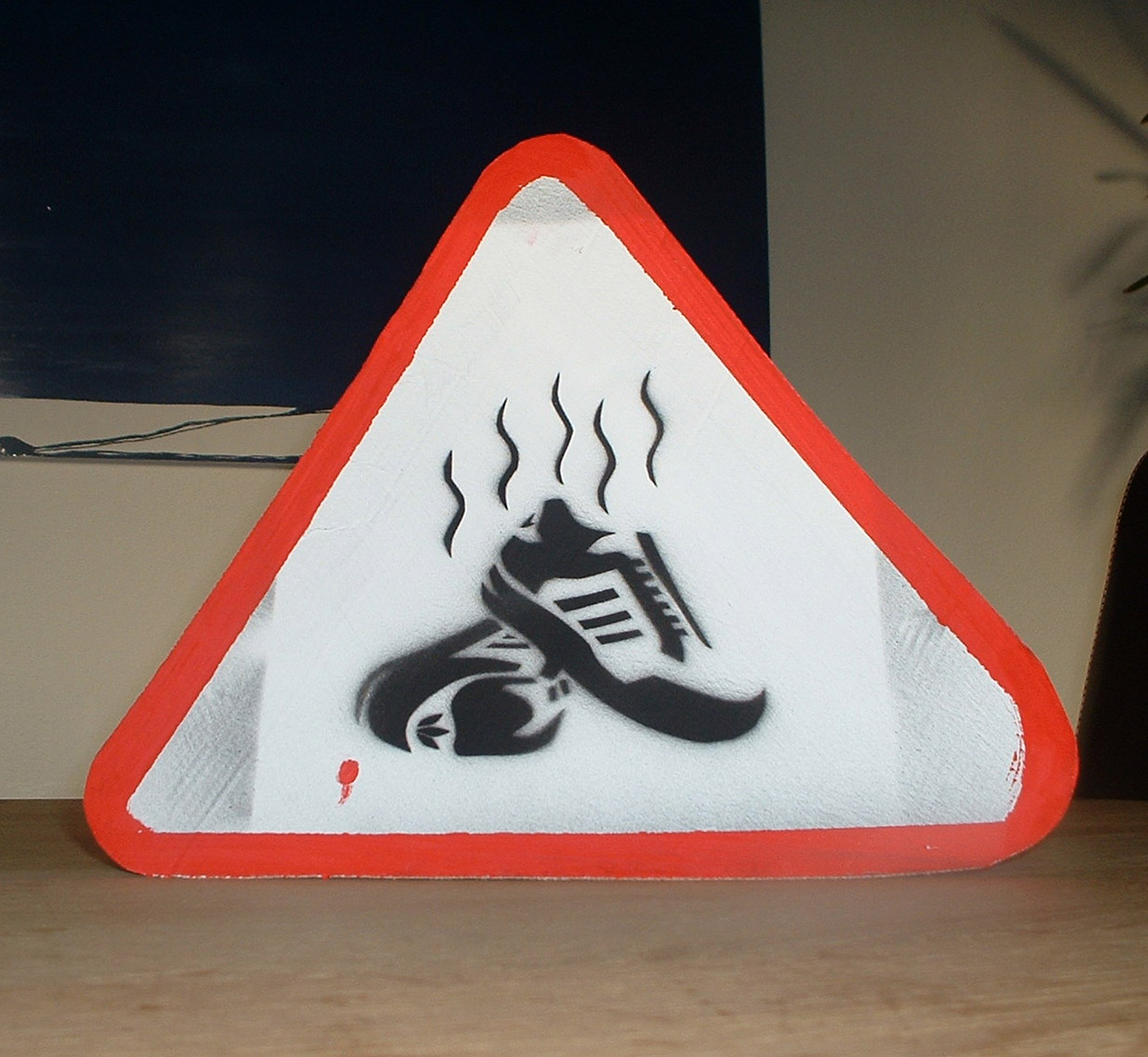Foot Odour – Bromhidrosis
Foot Odour and Sweaty Feet
(Stinky, sweaty, smelly feet)
What causes foot odour?
Your feet shed an average of 250 millilitres of sweat every day. The 250,000 sweat glands in your feet are so easily activated that the key is control. The technical term for foot odour is bromhidrosis which is the accumulation of bacteria, fungus, mould and yeast on the foot, especially between the toes.

Bromhidrosis is a condition of abnormal or offensive body odour, to a large extent determined by apocrine gland secretion, although other sources may play a role. Sudoriferous (sweat) glands are divided into two types: apocrine and eccrine.
Most of us have suffered from foot perspiration and odour from time to time, yet for some people, sweaty feet are a persistent problem which can be embarrassing and uncomfortable.

With 250,000 sweat glands, feet do tend to sweat more than other parts of the body, but with a daily hygiene routine, few people should suffer from the embarrassment that it may cause.
Bromhidrosis
Among the important functions of our skin is to assist in getting rid of the excess heat from our body. This is accomplished by evaporative cooling. When there is excess sweating or it is retained on the body, the sweat accumulates; this is called hyperhidrosis. Sweat ordinarily does not produce an odor. If the sweat stays on the skin too long, it can contribute to the growth of bacteria and the breakdown of skin chemicals. This bad smelling sweat is called bromhidrosis.

Sweaty feet, known as hyperhidrosis, can be caused by stress on the foot. This may be due to a structural problem, or because the foot is under strain or tired, for example, when you’ve been standing on your feet all day.
Hot weather can make matters worse, although, sweaty feet is a winter, as well as a summer, problem. It can also be an inherited condition.
In adolescents, sweaty feet are probably caused by overactive sweat glands triggered by changing hormonal levels in the body. As the sweat glands on the soles of the feet (and the palms of the hand) respond mostly emotion, mental or emotional stress is a common cause.

Risks of sweaty feet
Sweaty feet can also have a harmful effect on other aspects of your foot health too. The excess sweat can act as a chemical vehicle and solvent extracting chemicals from the linings of your shoes. These dissolved, shoe chemicals can cause skin rashes (contact or allergic dermatitis). The sweat can also lead the more rapid deterioration of your shoes.
Most importantly, the sweat also significantly changes the environment inside your shoes to not only dark and warm, but also damp the perfect environment for certain yeast, mold, fungal and viral infections of the skin. Sweaty feet are thus more like to develop skin rashes, yeast infections, athlete’s foot, fungus toenails and warts. If you have any of these conditions, then controlling your hyperhidrosis is very important for treating these concurrent problems.
At the Foot and Ankle Clinic our highly qualified team of Podiatrists are all members of the Australian Podiatry Association and offer a combined 50 years’ experience. They are trained to diagnose and effectively treat foot odour via a range of treatments.
Put your feet in our hands! See us today in Chadstone, East Bentleigh, Moe, Sale, Traralgon, Warragul & Online Store and Retail Enquiries. NO REFERRAL NEEDED!.


